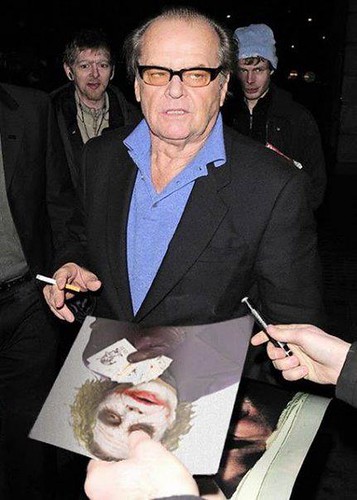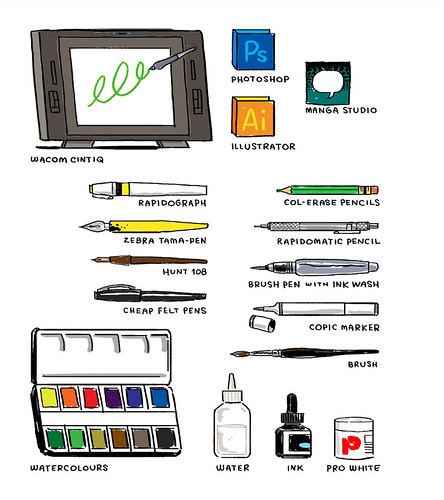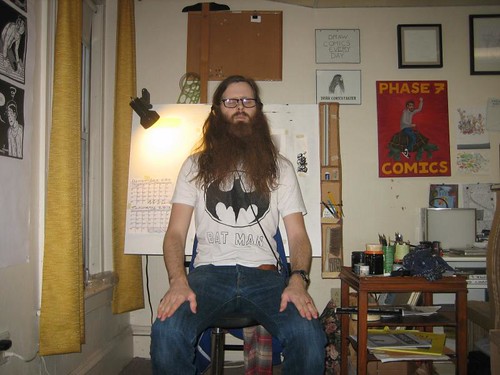
So, long term readers of this blog may recall
this post on June 7th, 2010. What you might recall about it is that I didn't post a damned thing again until
this post on December 12th, 2010. Then I posted some stuff for a bit and disappeared
until this post, following which I've been posting regularly, if less energetically than in what might be referred to as the blog's "heyday."
Well, as you might suspect, it all ties into a time line of events you weren't privy to. To put it succinctly, I lost, in part through my own fault and in part through circumstance, three of the most important things to me in the world, in the space of a year. Failed at them and lost them, to be exact. And in each case I caused harm not only to myself but to the other parties involved. Financial, as well as emotional, in two cases. That first post came right after the first, and the second most painful. I needed a jolt of money to have time to do finish the next step in my work on Acorn, the book I was working on, and had been working on for four and a half years. And right then came a project from Patton Oswalt, who, as you've seen, I'd done some posters for. He wanted me to do a comic for his first book, Werewolves and Lollipops. I saw my chance, asked for as much money for it as I could, and being the always good patron of illustrators that he is, he paid me well for it, in advance. About a week and a half later I started suffering from what would become dual illnesses that had me literally bleeding out of my head and my ass at the same time, and that's not even slightly getting into the gross parts. I drew a fevered, unpublishable version of the comic, then drew another, spending so much energy on it I wrecked my recovery and went into remission, and had to finish it sick. It's in his book now. It was a month late, it's the worst thing I have ever drawn, and a man who is a hero to me, who was always nice to me, who gave me a chance, paid dearly out of his own pocket for that piece of shit.
And the worst part is it wasn't enough. I was so late with the project I had to get a job, and I couldn't continue on the book. I was demoralized, more ashamed than I have ever been, and still pretty physically crappy. That was when I made the first post.
The second post came awhile after I'd been kicked off a project I started off on as an ass kicking deadline hero, having not turned in any work to speak of for...many months. And there was certainly no sign I'd be able to for...years. It didn't hurt as much as the Patton thing, because at least I owed the publisher a shitload of money, and I never turned in bad work to them ever. That's how bad it was, that owing them $17,500 made me feel BETTER. But at least I still had my girlfriend, right? Well, you'll notice the posts stopped again.
And let me tell you, those are only the top three things out of a year that would have sucked without them. Psychopath boss at a job that made me miserable, landlord who didn't heat our apartment for the better part of 2 months, to the extent that it went repeatedly got down to the high thirties in our apartment, room mate drama, friends moving away... And this was all after the bitter failure and financial ruin of my move to Portland, which I still haven't gotten over, emotionally or financially.
It wasn't even just that I had nothing in the tank. Writing something, anything, involves settling down into your own head for a bit, and I absolutely could not be alone with my thoughts and emotions. The breakup was the last straw. I marvel at it- it wasn't even a bad breakup. It was about as good as could be hoped for. And I've been through a lot of tragedies and rough spots in my life. I've lost friends and family to untimely deaths, been attacked by gangs and hired thugs in school, helped drag my father's body off a couch so my mom could do CPR while I flagged down the ambulance and then had kids say to me "Ha ha, your dad died!"...All pretty bad stuff. And like I said, fairly good breakup. But I have never, ever been in that kind of pain, ever. It was, and continues to be, much worse than I anticipated. I still haven't cried about it. The rest of my life collapsed around me before the breakup, and until I set it back to at least stable, I'm like a paramedic, staying frosty and trying to contain myself until it's safe for me to react to how I feel about what's happened.
The inside of my head was a no fly zone for months, not even for a second, and that definitely meant no writing, no drawing. Hardly any thinking, really.
It's been almost a year now and you were the first to know when the logjam cleared enough for me to write. For several months now I've been able to feel joy, and I spend less and less time each day feeling terrible. I don't feel as good as I used to- the untouchable ball of sadness is still there, waiting for me to make things safe enough to come out, and it's presence dulls all my feelings. But things are better. And I am, at last, starting to work on comics again.
It's that process I'd like to talk about.
Before I could be in my head enough to post here again, I still wanted to make marks. I'm an artist before I'm anything else. Even rendered incapable of doing art, I have to make something with my hands. So the first thing I did was lettering. I knew my lettering hand would be rusty from disuse, so while I was working in the Shaker store this summer I wrote down all the lyrics from the Shaker songs, words from packages on the desk, whatever sentences came to mind. I filled pages with just solid text, trying to make it as even and perfect as I could. It wasn't art, but at least I could feel competence and confidence come back into my disused hands.

This post is getting pretty long, so I'm gonna continue it in another installment. Before I go, though,
here's a video of Fabio Moon inking. Christ I love videos of cartoonists inking.

 After awhile of that, I started feeling secure enough to dip down slightly more and start working on the likenesses of characters in the story I'm working on with my friend Emily. I hadn't drawn in some time, so the results were crude, but my hand was loosening up. I still couldn't draw for very long without sinking into my head and being caught in the gravity of the unapproachable ball of sadness, but still, some work is more than no work.
After awhile of that, I started feeling secure enough to dip down slightly more and start working on the likenesses of characters in the story I'm working on with my friend Emily. I hadn't drawn in some time, so the results were crude, but my hand was loosening up. I still couldn't draw for very long without sinking into my head and being caught in the gravity of the unapproachable ball of sadness, but still, some work is more than no work.




 Lately I've found that the bakery near my work is a great place to get drawing done, and every time I have a late shift I arrive early and draw a page's worth of anything, and send it to Emily. My hand still keeps trying to make marks like I'm drawing Acorn, but slowly my hand is drawing more and more like it's supposed to for this story.
Lately I've found that the bakery near my work is a great place to get drawing done, and every time I have a late shift I arrive early and draw a page's worth of anything, and send it to Emily. My hand still keeps trying to make marks like I'm drawing Acorn, but slowly my hand is drawing more and more like it's supposed to for this story.


 Comic Tools always follows close behind whatever I'm doing with my comics. I'll hit a problem, overcome it, and then write a tutorial. The anatomy entries were the product of my frustrations with the anatomical teaching materials available to me. And it will be like that with this project. As I go along, the things I teach will likely follow close behind the obstacles I overcome in making it. For now, my obstacle is making it through every day with less pain and more art, so that's what I'm posting about.
Comic Tools always follows close behind whatever I'm doing with my comics. I'll hit a problem, overcome it, and then write a tutorial. The anatomy entries were the product of my frustrations with the anatomical teaching materials available to me. And it will be like that with this project. As I go along, the things I teach will likely follow close behind the obstacles I overcome in making it. For now, my obstacle is making it through every day with less pain and more art, so that's what I'm posting about.





































